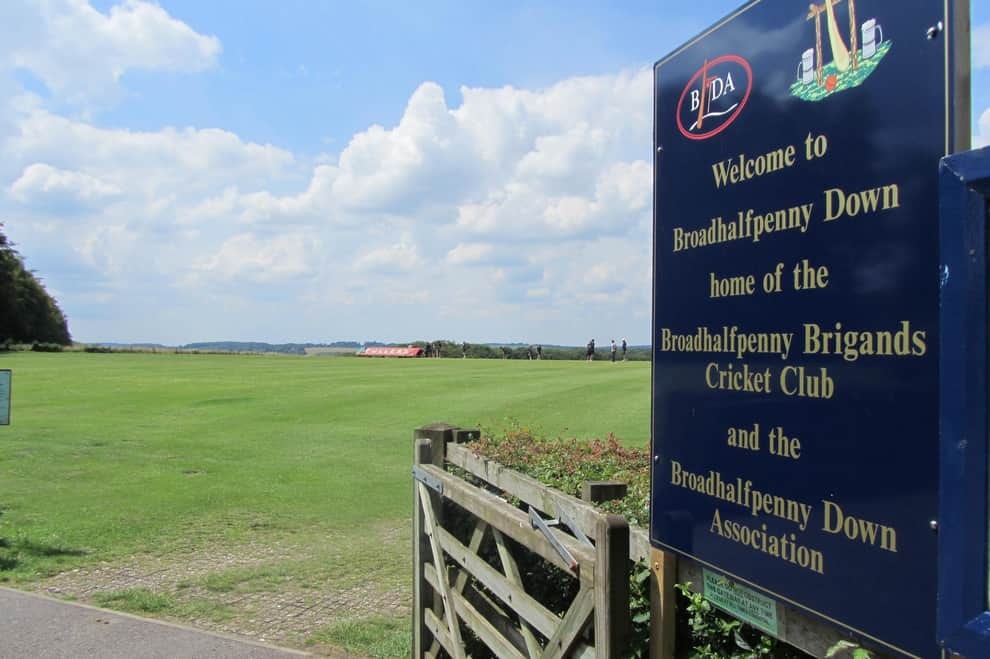
Just as the car leaves Southampton and makes its way into the countryside, all you see is green. Huge stretches of green, occasionally interspersed with patches of yellow, welcome the eye. Had there been no satellite technology, one could never have imagined that there could be something incredibly interesting a few miles further into the drive. As the navigation system directed the car, I was left wondering how people managed this commute in 1730, the year the ‘Bat and Ball’ pub was first established. It was in this pub that cricket’s rules were first formalised in the 1750s under the guidance of Richard Nyren, who predated WG Grace as the original father of cricket. The Marylebone Cricket Club (MCC), which came into existence in 1787, inherited the rules from the men of Hambledon, and that’s how the game we now love to watch in India got its initial bearings.
As I reached Broadhalfpenny Down Cricket Ground, which was taken over by the men of Hambledon in the 1750s and 1760s, I was left struck by its beauty. I had come here 20 years earlier as a student, and things have only become better since. The Bat and Ball pub and the cricket ground, which would easily rank as one of the most beautiful I have seen, are divided by a narrow road. On a good English summer’s day, a game of cricket followed by a pub lunch is the ideal feel-good recipe.

It must be said here that the game was indeed played before the men of Hambledon took it over, but there was no organisation back then. It was a farmers’ sport played by young farm boys and shepherds. It was only after the setting up of the Bat and Ball pub that the first set of rules for the sport were drafted. Nyren, the landlord, played a big hand and was also recognised as the most proficient all-round cricketer of his day. It is no surprise then that one of the first things framed on the walls of the Bat and Ball pub are the rules of the game as they were first written in 1744.
A tour of the pub throws up gems at every corner. On one of the walls are framed cricket’s earliest advertisements, which unsurprisingly include the Coleman’s Mustard advertisement by the great WG Grace. The very next wall has a blackboard, now used for pub quiz scores, but originally used a century earlier to keep cricket scores at the club ground. Next to the cash till, perhaps the only sign of modernity, is framed the notes of a song written for the Hambledon men more than 100 years ago, celebrating their on-field achievements with bat and ball.
As I sat down for a delicious pub lunch, my eyes went straight to the framed original scorecard of the 1000 Guineas match played in 1777 between All of England and the Hambledon men. This scorecard is true testament to how good the Hambledon team was, and remains, to this day, one of the prize possessions of the Bat and Ball pub. While the All England team scored 166 and 69 in their two innings, Hambledon scored a mammoth 403 in their only innings, winning the 1000 Guineas game by a massive margin.

As the sun finally sneaked out from behind the clouds, the lady in charge of the Broadhalfpenny Down Cricket Club pavilion opened the gates of the ground to allow us a look in. The ornate pavilion is clearly a throwback to the 18th century, and while the dressing rooms have been modernised and players have all the benefits of modern technology including a Wi-Fi signal, the blend between tradition and modernity is what sets the club apart. “We are doing everything we can to encourage more people to come to Broadhalfpenny Down and the Bat and Ball pub,” says the administator. “What used to happen earlier was that tourists would come to the ground and take some photos and leave. Not many knew they could actually come inside the pavilion. Everyone who has come in has left with a sense of satisfaction.”
But the best was yet to come from her. When I asked how frequently the ground was used to play cricket, she gave me a gem. “They play cricket almost every week, but what I am really looking forward to is a wedding next month,” she said. “A well-known local cricketer is getting married to an opera singer, and they are playing a game of cricket in the afternoon with the guests. Once that is done, we will have a Bollywood night to round things off.”
Bollywood music and dance on Broadhalfpenny Down Cricket Ground is perhaps the best way to prove Ashis Nandy right. Cricket is indeed an Indian game accidentally discovered in England. And isn’t the IPL the perfect proof of that, with the West looking to the East, which has now taken control of the beautiful game!





